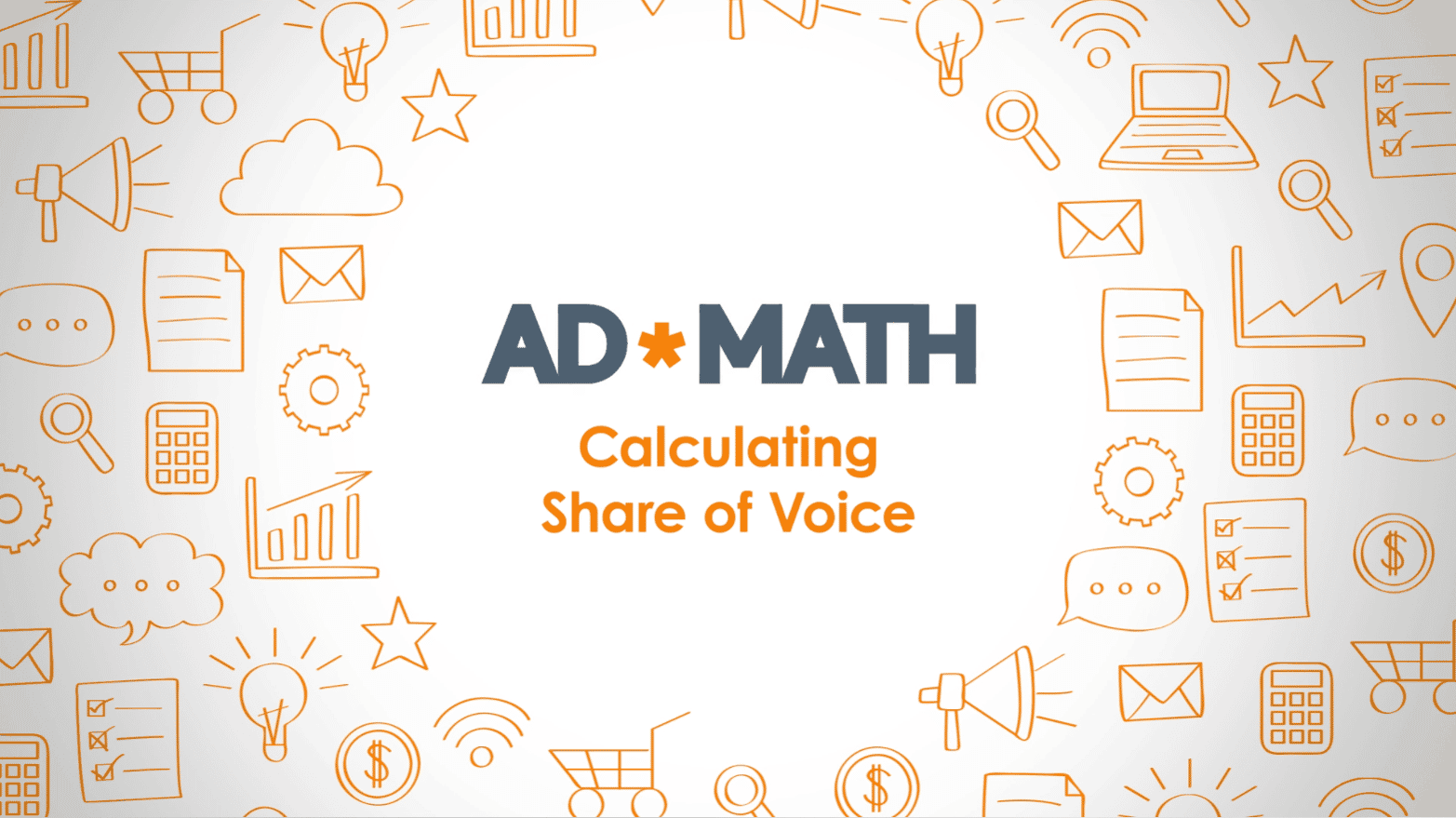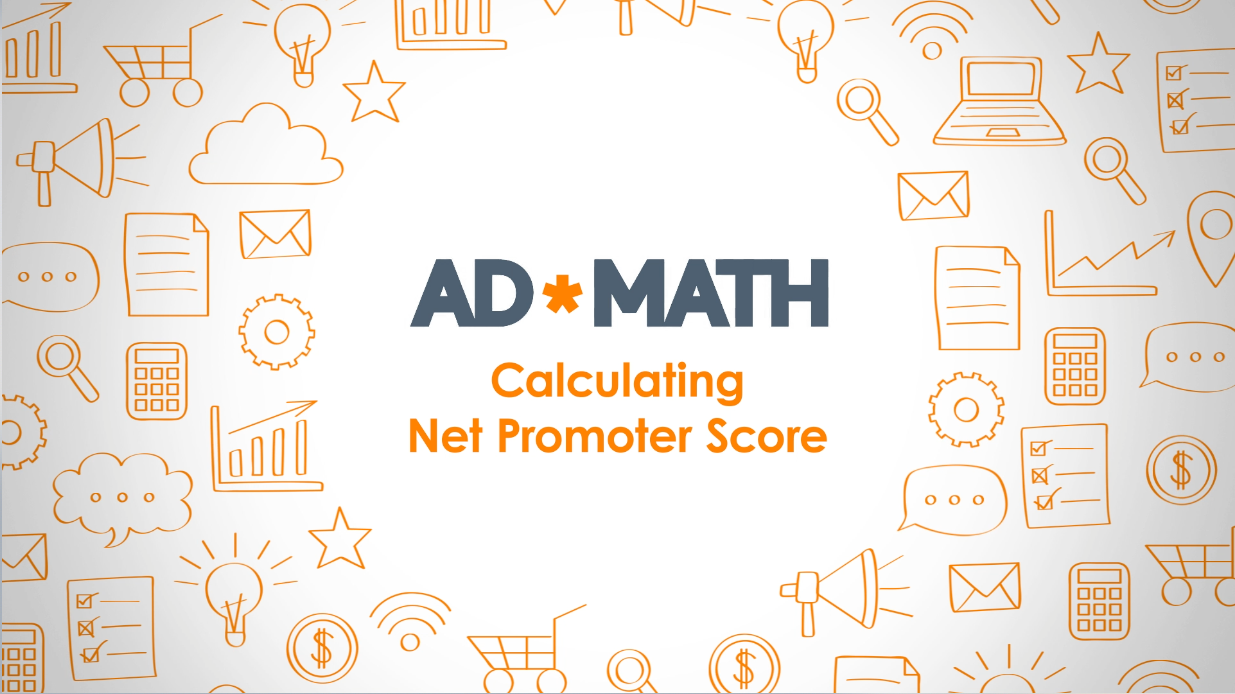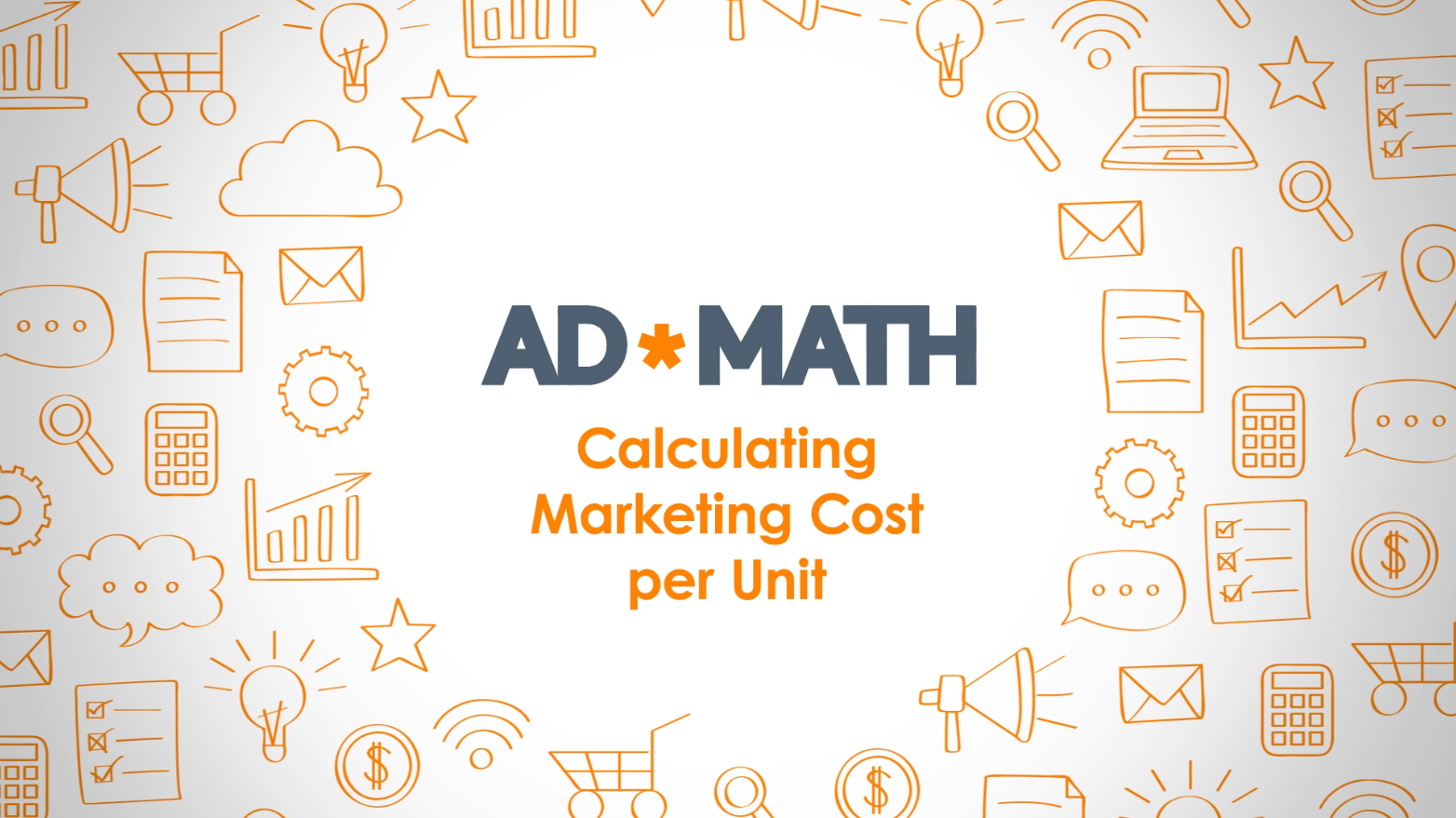How to Calculate Your Net Promoter Score (NPS)
In this Ad Math video, we discuss how to calculate your Net Promoter Score.

Since a significant portion of your marketing budget goes to paid advertising, it makes sense that you should want to measure your share of advertising versus the total spend of the market.
The share of voice, or SOV, measures the percentage of media spending by a company compared to total media expenditure for the product, service, or category in the market.
Knowing how to calculate your share of voice allows you to measure a brand’s presence and to gauge how visible the brand was within a specific channel during a particular time. Logically, if you want to increase your visibility, you spend more on marketing, which, in turn, will increase your share of voice.
You calculate the share of voice by taking your advertising spend and dividing it by the total of all market advertising spend for the same type of product or category.
A high share of voice can lead to increased awareness, which should ultimately lead to an increase in sales and overall market share.
Keep in mind that it’s not just enough to throw money at your audience to increase your share of voice. What your saying in your marketing is still crucial. After all, it isn’t exactly useful to have the highest share of voice if your message doesn’t appeal to your target customer.
The following are a few examples where the definition of the share of voice (SOV) may vary in different mediums:
Some marketers look at the share of voice across the total of a brand’s marketing efforts vs. those of the entire category. For example, if someone wanted to understand his or her brand’s visibility throughout an integrated campaign. It’s possible to look at the share of voice this way; however, the resulting calculation may be misleading due to the nuances of each channel and how they report data.
Within media buying and planning, share of voice is a term for looking at the total media exposures of a paid brand message combined with your competitors. A share of voice calculation is critical when assessing the return on your media investment, whether it’s TV, outdoor, digital, or other advertising channels.
As a digital marketing agency, we can attest first hand that calculating a digital SOV is tricky since many of the digital channels report data slightly different since their users – and how those users leverage that platform – tend to be vastly different. Additionally, “digital” tends to include earned media (organic) and paid media, which may complicate the equation.
Learning how to calculate a digital share of voice, is still a useful exercise, however, even if you are not able to view a complete picture across multiple platforms as you would with traditional media. The key is understanding how it’s different and using your number as a general guide for changes and optimization.
Similar to digital marketing, understanding your social media share of voice tends to be tricky. Before you can calculate your share of exposure of social channels, you need to be sure you’re comparing apples to apples. Many social platforms do not share the same criteria for share of voice, and so you may find some data comparing your exposure to competitors, while other data compares total engagements vs. competitors.
Regardless of what type of share of voice you’re trying to calculate, it’s critical to understand the data inputs so you can follow the math and see the insights when they appear. As with all metrics and key performance indicators (KPIs), there is no silver bullet. Instead, it’s about identifying subtle trends and taking action on them accordingly.
The purpose of advertising is to inspire consumers to buy. So a high share of voice can lead to increased awareness, which ultimately can lead to increased sales and market share.
While your share of voice is a good metric to track if you’re running a lot of paid media, it’s not the only thing that matters. You must also be mindful if you’re targeting the right audience, running ads during the right time of day, or promoting your brand on the right channels.
After all, having a high share of voice may indicate that you’re dedicating a larger amount of money devoted to advertising versus competitors; however, it won’t measure how relevant that marketing is to your target audience.
Don’t forget to subscribe to our channel to stay updated when we release a new Ad Math video. And, if you have a marketing metric that you’d like us to break-down in an upcoming video, let us know, and it may be our next Ad Math topi
Sign up for our monthly newsletter to receive updates.

In this Ad Math video, we discuss how to calculate your Net Promoter Score.
![Home Improvement Marketing: The Value of Video [Statistics]](https://www.mightyroar.com/hubfs/umanoide-8NvFlA8DO6Q-unsplash.jpg)
DIY Home Improvement projects are more accessible than ever, and that accessibility is driven by the most significant change in consumer behavior in...

When you don't have deep pockets, every dollar in your marketing budget counts and you need to allocate your money as effectively as possible. That's...